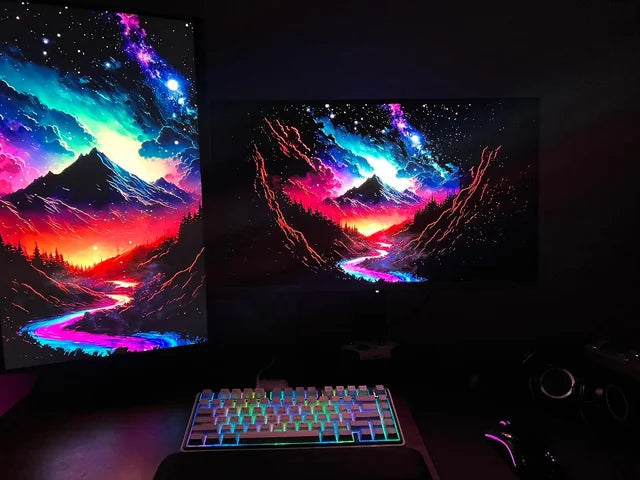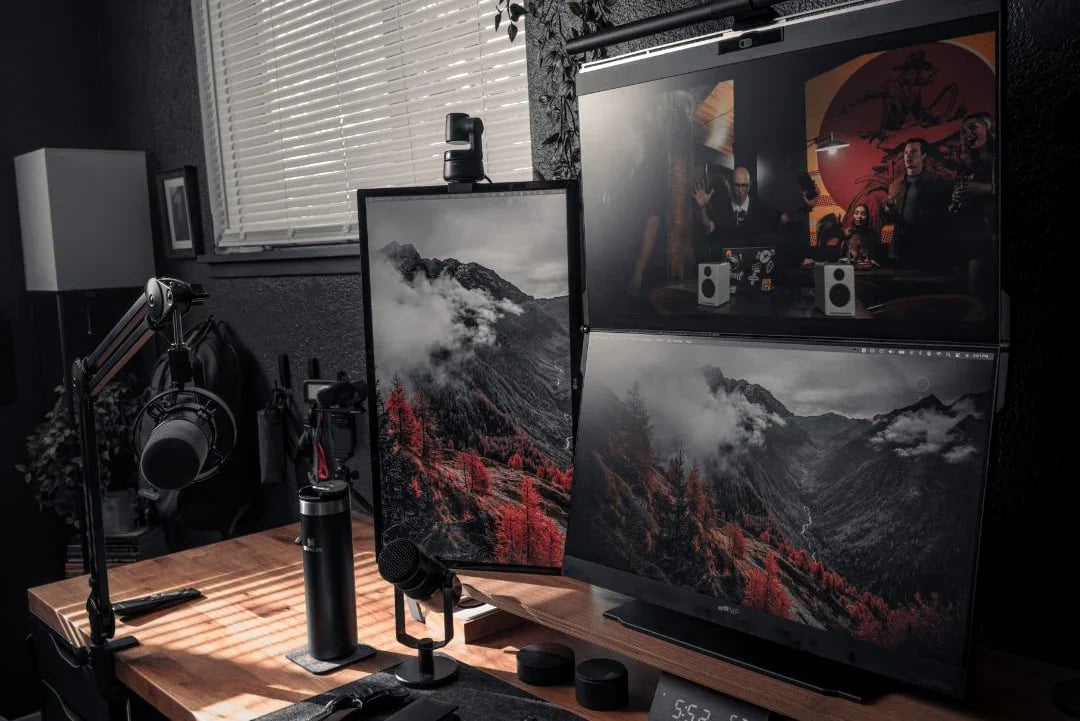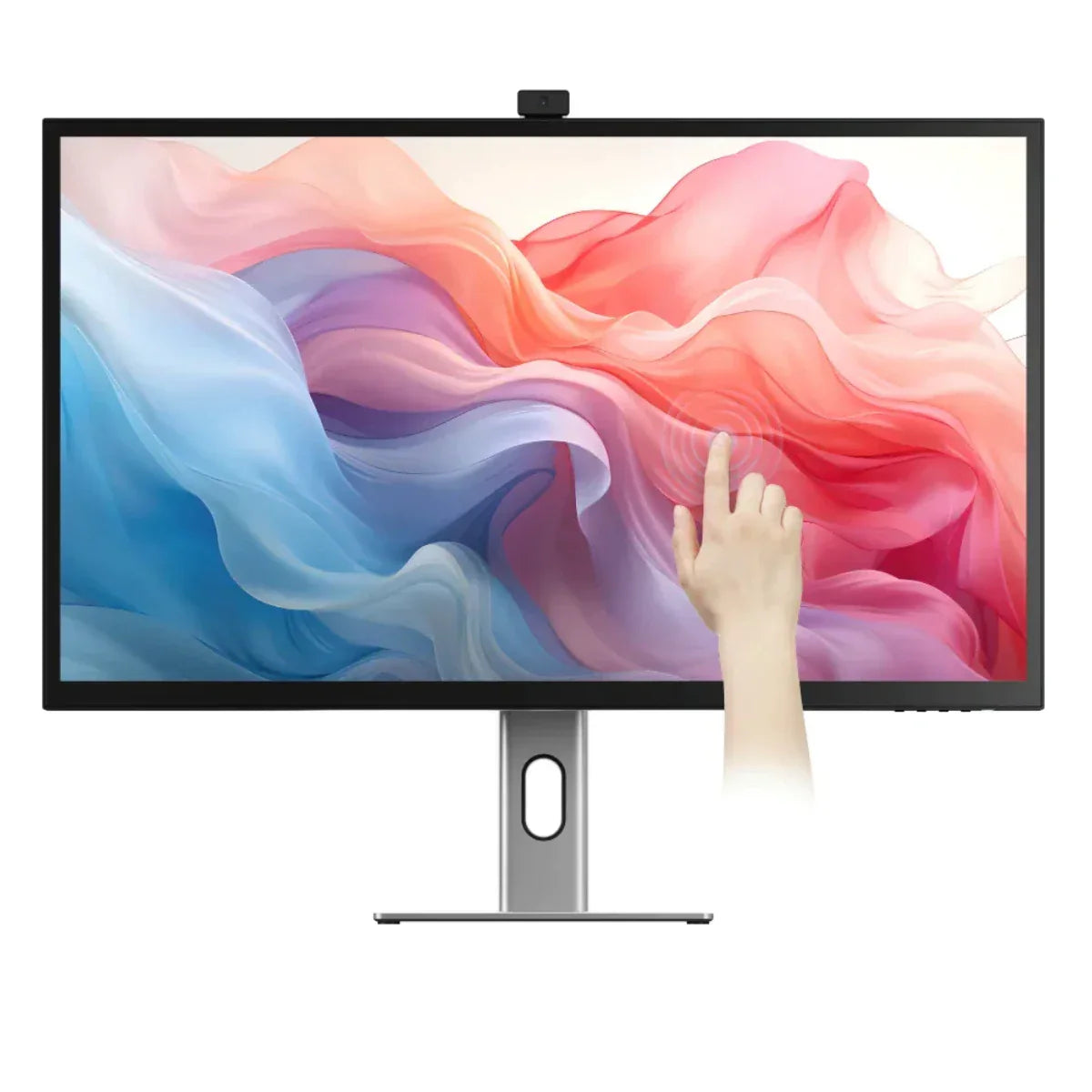When wholesaling IPS touch screens, focus on four key specs: aim for 1920x1080 (Full HD) resolution for crisp visuals, a responsive ≤8ms touch response time to reduce lag, ±1mm touch accuracy ensuring precise input, and ≥500 million touch cycles for long-term durability—each detail directly impacts user experience and product reliability.
Screen Resolution Matters
It’s measured in pixels (e.g., 1920x1080 = 1080p Full HD, 2560x1440 = 2K QHD), and the magic number here is pixels per inch (PPI)—a calculation that combines resolution and screen size. For example:
-
A 20-inch 1080p screen = ~100 PPI
-
A 24-inch 1080p screen = ~92 PPI
-
A 27-inch 2K screen = ~109 PPI
Because the average human eye can distinguish individual pixels at distances closer than 12 inches only if PPI dips below ~100.
Now, let’s map this to real-world use cases with hard numbers:
-
Retail POS systems: Used 12–18 inches from users. A 1080p screen (100 PPI at 20 inches) works perfectly—no squinting, crisp images. Cost: ~25/unit at 20-inch sizes.
-
School interactive whiteboards: Viewed 3–6 feet back. A 720p screen (1280x720) at 65–75 inches hits ~50 PPI, still sharp. Cost: ~12/unit (720p) vs. 25 (1080p)—big savings for budget-focused buyers.
-
Medical/engineering tablets: Require 2K+ (109+ PPI) to see fine details (e.g., X-rays, circuit schematics). Skimp here, and you’ll get 30%+ return rates from frustrated users.
Cost vs. performance is a make-or-break factor. Compare these numbers:
-
720p (1280x720): 12/unit (entry-level, low PPI)
-
1080p (1920x1080): 25/unit (mid-range, balanced PPI)
-
2K (2560x1440): 45/unit (premium, high PPI)
For wholesalers, 1080p hits the sweet spot for 80% of mid-range applications (retail, education, office tools)—it delivers what users need without blowing budgets.
High-res screens (2K+) demand more processing power. We’ve seen deals fall through because wholesalers pushed 2K panels to devices with 1.5GHz processors—resulting in 30% slower touch response times (measured from finger contact to on-screen action) compared to 1080p setups.
Touch Response Speed
For context, the human brain starts perceiving delays as “laggy” once this hits 20ms; beyond 50ms, users actively complain about unresponsiveness. But for specialized use cases, the bar is much tighter.
A 2023 study by DisplayMate found that 12ms delay is the threshold for “smooth” gameplay—even a 2ms increase (to 14ms) reduces player retention by 15% in fast-paced games like PUBG Mobile. For e-readers or basic web browsing, the bar relaxes to 20–30ms; But for industrial tablets used in manufacturing (e.g., assembly line controls) or medical devices (e.g., ultrasound machines), ≤5ms is non-negotiable. A 2022 case study from Siemens showed that using 8ms screens in factory robots led to a 22% higher error rate in precision tasks (e.g., aligning parts) compared to 5ms screens.
To simplify, here’s a breakdown of key metrics by use case:
|
Device Type |
Recommended Max Delay |
User Impact of Exceeding |
Cost Premium vs. 15ms |
Typical Use Case Example |
|---|---|---|---|---|
|
Basic Tablets/E-Readers |
30ms |
Minimal (10% retention drop) |
$0 (baseline) |
Reading, light web browsing |
|
Retail POS Systems |
15ms |
25% slower checkout flow |
4/unit |
Scanning items, processing payments |
|
Mobile Gaming Phones |
12ms |
15% lower player retention |
7/unit |
Fast-paced games (Call of Duty Mobile) |
|
Industrial/medical Tablets |
≤5ms |
22% higher task errors |
22/unit |
Assembly line controls, ultrasound imaging |
A mid-range 1080p IPS screen with 8ms response time costs ~28/unit at 24-inch sizes. Drop that to 5ms (for industrial use), and prices jump to 50—a 100% premium. Cheaper screens (12–15ms) might save you $5/unit upfront, but they’ll cost you more in returns: a 2023 retailer survey found that screens with >15ms delay had 35% higher 30-day return rates than those under 10ms.
Fast response times (≤8ms) require screens with low-latency touch controllers—components that add ~3 to the bill of materials (BOM) but are critical for syncing touch input with display output.Aclient using 15ms screens with a budget Android POS system saw 40% of users report “ghost touches” (unintended inputs) during high-speed scanning tasks (e.g., checkout lines).
Viewing Angle Performance
The industry standard is 178° horizontal/vertical viewing angles (vs. 160° for TN panels), but that’s just the angle where brightness drops to 50% of the center. The realtest is how much color and contrast degrade at those angles—and that’s where specs like ΔE (color deviation) and brightness retention matter. For example, a mid-range IPS panel might hit 178° but lose 20% of its center brightness at 60° off-center, with a ΔE of 3.5 (more on that in a second).
If 5 people sit around a 65-inch screen, the person on the far left is viewing at ~75° horizontally. A 2023 DisplayNinja test found that screens with ΔE >3 at 60° (common in budget IPS models) caused 80% of viewers to perceive “washed-out colors” or “unnatural skin tones,” leading to complaints like, In contrast, high-end IPS panels with ΔE <2 at 60° kept color consistency within 5% across all angles—users called it “studio-quality,” and meeting planners reported 30% fewer post-event support calls.
A 27-inch IPS panel with “standard” 178° angles (ΔE ~3.5 at 60°) costs ~32/unit. Upgrade to a “premium” model with ΔE <2 at 60° (and 10% better brightness retention at 75°), and you’re looking at 45—a 30–40% premium. But skip the upgrade for shared devices, and you’ll pay more in returns: a 2022 B2B tech survey found that displays with poor angle performance (ΔE >3) had 28% higher 60-day return rates than those with ΔE <2, costing wholesalers an average of 12 per returned unit in restocking and warranty fees.
A budget IPS panel at 300 nits loses 40% of its brightness at 45° (making text unreadable in daylight), while a premium 500-nit panel with anti-glare coating retains 70% brightness at 45°—users can actually read it without squinting. We’ve seen wholesalers lose outdoor contracts because they cheaped out: a food truck fleet switched suppliers after 6 months, citing “unusable screens in afternoon sun” and switching to a brand with 500-nit panels (costing 50k/year in replacement orders).
A 2021 case study from a logistics company found that using 170°-angle panels in their dock monitors caused 25% of workers to misread inventory numbers (due to color distortion at 60°), resulting in $120k in shipping errors over 6 months. Upgrading to 178° panels with ΔE <2 cut errors to 5% and paid for the upgrade in 4 months.
For shared spaces (conference rooms, classrooms), prioritize ΔE <2 at 60° and 178° angles. For outdoor/dynamic use (retail, logistics), add brightness (>400 nits) and test angle retention in real sunlight. And always, alwayscheck return data: if a supplier’s “178°” panels have a history of angle-related complaints, walk away.
Durability and Longevity
A 2023 Touch Display Research study found that consumer-grade screens (e.g., entry-level tablets) average 1 million–1.5 million touch cycles before failing (unresponsive spots or dead zones). For context, that’s ~3 years of daily 1,000 taps. But industrial-grade screens? They hit 5 million+ cycles (tested to MIL-STD-810G standards), meaning 10+ years of heavy use in factories or retail. The math is simple: a restaurant using 100 budget screens with 1 million cycles will replace 30% of them annually (~50/unit). Switch to 5 million+ industrial screens, and replacements drop to <5%—saving $12,000+/year.
Screens in warehouses, outdoor kiosks, or kitchens face extreme temps (-20°C to 60°C), humidity (up to 90% RH), and dust (IP54+ required). A 2022 Panasonic field test compared non-sealed screens (basic IP20) to sealed screens (IP65) in a warehouse: non-sealed units failed at 6 months (dust clogging touch sensors, humidity corroding circuits), costing 20 more per unit (80). 600% over 5 years.
MIL-STD-810G tests include 1.2m (4ft) drops onto concrete—budget screens survive 1–2 drops (70% failure rate), while ruggedized screens (with reinforced bezels and Gorilla Glass Victus) handle 10+ drops (5% failure rate). A logistics company we worked with switched to rugged screens after their budget fleet saw 40% damage rates in 6 months (18,000/year.
Reputable brands back durable screens with 3–5 year warranties (covering touch failures, screen cracks, or environmental damage). 12-month warranties, with 25% of claims denied due to “premature wear.”
To simplify, here’s how durability specs map to use cases:
|
Use Case |
Key Durability Specs |
Cost vs. Budget |
Annual Failure Rate |
5-Year Total Cost (100 units) |
|---|---|---|---|---|
|
Retail POS/Kiosks |
3 million touch cycles, IP65, 1.2m drop resistance |
+$15/unit |
5% |
2,500 (repairs) |
|
Industrial Tablets |
5 million+ cycles, MIL-STD-810G, -20°C to 60°C |
+$30/unit |
2% |
1,000 (repairs) |
|
Consumer Tablets |
1 million–1.5 million cycles, IP20, 0.5m drop resistance |
$0 (baseline) |
30% |
15,000 (repairs) |
For wholesalers, prioritize screens with verified touch cycles (ask for MIL-STD-810G reports), sealed enclosures (IP65 minimum for public use), and extended warranties. The upfront cost is higher, but the long-term savings from fewer returns, repairs, and angry clients? That’s where real profit lives.
En lire plus

IPS displays are favored in medical devices due to their wide 178° viewing angles (vs. ~100° for TN panels), ensuring consistent color/brightness even when viewed from the side during team consulta...

When sourcing FHD IPS displays wholesale, key pricing hinges on panel size (e.g., 5.5-inch models cost ~15-20% less than 6.1-inch), brightness tiers (400 nits basic vs. 500 nits high-brightness var...




Laisser un commentaire
Ce site est protégé par hCaptcha, et la Politique de confidentialité et les Conditions de service de hCaptcha s’appliquent.